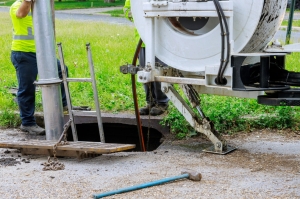In an era where technology permeates every aspect of modern life, the real estate industry is no exception. The advent of drones has revolutionized the property surveying process, offering unprecedented opportunities to streamline operations, enhance accuracy, and unlock valuable insights. From construction companies to land developers, architects to urban planners, the utilization of drones for property surveys has become increasingly prevalent, redefining traditional practices and setting new standards of efficiency. In this article, we delve into the multifaceted benefits of drone property surveys, exploring how this innovative technology is reshaping the landscape of real estate development and management.
Enhanced Efficiency:
Traditionally, property surveys involved time-consuming manual processes, often requiring teams of surveyors to traverse rugged terrain or inaccessible areas. With drones, however, this paradigm has shifted dramatically. Equipped with high-resolution cameras, LiDAR (Light Detection and Ranging) sensors, and GPS technology, drones can swiftly capture comprehensive aerial imagery and topographic data with unparalleled precision. This not only expedites the surveying process but also minimizes the need for human intervention in hazardous or challenging environments. As a result, projects that once took weeks or months to survey can now be completed in a fraction of the time, enabling developers to accelerate their timelines and optimize resource allocation.
Safety and Accessibility:
One of the most significant advantages of drone property surveys is their capacity to access remote or hazardous locations with minimal risk to human personnel. Whether it's rugged terrain, steep slopes, or unstable structures, drones can navigate challenging environments with ease, capturing detailed imagery and data without endangering human lives. This is particularly advantageous in construction projects where safety is paramount, as it allows developers to assess site conditions and monitor progress from a safe distance. Furthermore, drones can access areas that are otherwise inaccessible to traditional surveying equipment, such as rooftops, cliffs, or dense vegetation, providing comprehensive insights into the property's features and constraints.
Accurate Data and Analysis:
Accurate data lies at the heart of informed decision-making in real estate development. Drones excel in capturing high-resolution imagery and precise topographic data, enabling stakeholders to obtain a comprehensive understanding of the property's characteristics and potential. Whether it's measuring land elevation, identifying drainage patterns, or assessing vegetation coverage, drones provide detailed insights that inform design decisions, mitigate risks, and optimize project outcomes. Moreover, the integration of advanced technologies such as LiDAR enables drones to generate 3D models and point clouds, facilitating sophisticated analysis and visualization techniques that enhance project planning and execution.
Conclusion:
From accelerating project timelines to enhancing data accuracy and minimizing environmental impact, the benefits of drone property survey are undeniable. As the real estate industry continues to embrace technological innovation, drones are poised to play an increasingly integral role in reshaping the way properties are surveyed, developed, and managed. By harnessing the power of aerial data collection and analysis, stakeholders stand to gain a competitive edge in an ever-evolving market landscape, driving efficiency, sustainability, and innovation in real estate practices. As we look to the future, the sky is no longer the limit—it's the starting point for transformative progress in property surveying.





